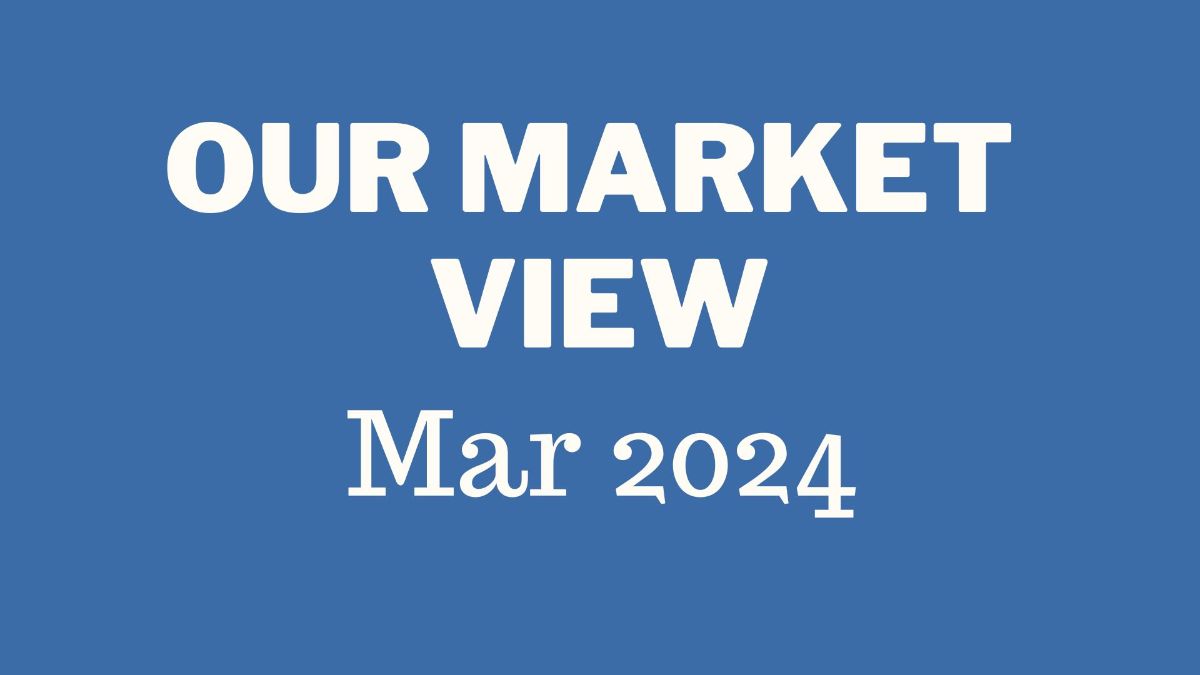Feb 2024 continued the consolidation of the last month with less than a percent rise in Nifty 50 and Sensex while the midcap and smallcap indices declined by 0.80% and 0.89% respectively. Indian 10-year bond yield declined from 7.13% to 7.06% because of the Union budget giving lots of importance to fiscal rectitude even in an election year. USD/INR continued to trade in a narrow range around a level of 83.
Global markets continued to perform well, especially the USA indices. The Nasdaq composite generated an impressive return of 5.95% and ended the month at a level of 16274. S&P 500 moved to 5137, an increase of 1.7%, while DJIA rose by 2.15% and is presently at 39087. USD 2-year yield started the month at 4.23% and moved up to 4.54%, while the 10-year yield rose to 4.18 %, from an earlier level of 3.94%. Gold has also risen to 2095 USD per Troy Ounce while Brent Oil is at 83.6 USD per barrel.
Indian GDP figures were very impressive in Q3FY24, the Indian economy outperformed expectations, growing at 8.4%, surpassing the predicted 6.6% rate. This rise was supported by robust growth in the manufacturing and construction sectors. However, a significant divergence between GDP and GVA raised concerns, with GVA (GDP excluding indirect taxes and subsidies )growth at an expected 6.5%. Economists caution that the high GDP, though impressive, may not reflect balanced growth, citing a decline in agriculture, uneven private consumption, and increased reliance on public capex.
One important development in Feb 2024 was the long-awaited initiation of rotation out of midcaps and small caps into large caps. SEBI is concerned about high valuations and frothiness in small and midcaps and has recently issued a directive to mutual funds to protect the interest of investors of smallcap and midcap schemes. Following this diktat, the Association of Mutual Funds in India (AMFI) has asked MFs to make more disclosures on these schemes and put in place a policy to protect investors’ interests in 21 days.
RBI has also taken a spate of regulatory actions against Paytm payments bank, JM financial products, and IIFL finance with a common thread of compliance and corporate governance issues. There is an attempt by the regulators to decrease the pools of liquidity from the banking and financial system being diverted into the capital market, creating potential systemic risks.
Global markets continue to do well, USA and India are 2 major markets doing well but with different characteristics. The USA with an AI-centric boom is very concentrated, the magnificent seven are up significantly and account for more than half of all US market gains.
India’s bull market is more classic broad-based. Gains in the stock market are evenly distributed across sectors and no sector accounts for even a quarter of total returns over last year. Additionally, foreign money is flowing in, but not as fast as domestic money. Foreign portfolio investors now own less than 40% of stocks available for public trading, down from 60% a decade ago. The rise in income is enabling more people to purchase stocks, with the amount of money, held in SIPs tripling in the last 2 years to 110 billion USD. Number of publicly listed companies has multiplied 5 times in the last 2 decades to 2800. 180 companies have tripled this decade and now have a value of USD 1 billion or more. This is more than the USA with 160 and China with 80.
India continues to show impressive GDP growth, controlled inflation, sustained increase in corporate earnings, and a very sound external sector, and therefore, our bullish market view remains intact. The long-term economic progress in India and the equity uptrend are likely to continue, though with episodic corrections. FII flows are undoubtedly volatile but domestic flows remain resilient and are increasing.
Overall, for the medium-term goals (anything above 3 years), allocation to equities should remain on the higher side. Fresh money could be invested in tranches, utilizing the STP route- systematic transfer plan. Equity mutual fund schemes remain the preferred way to express interest in stocks, because of the broad-based market and rapid rotation across sectors and caps. Consequently, selected schemes should belong to categories, that allow easy movement from one cap to another, and a few examples are Large & Midcap, Multicap, Flexicap, and Focus. Also fund managers, who identify the right sectors quickly, should be selected, one helpful pointer is the percentage of schemes, managed by them, which are in the top quartile during the last 2 years.
Also as always, with the global uncertainty, some part of the portfolio should always be invested in high-quality short-term debt funds to take care of liquidity and any contingencies. Similarly, for short-term goals, equities because of their volatile nature, should not be deployed. Equity savings schemes, balanced advantage schemes, because of their hybrid nature, or multi-asset funds may be utilized for goals with a time horizon of 2-3 years. An additional advantage of these schemes over traditional bank deposits is the much lower equity taxation which these schemes enjoy. Portfolio construction should be sequential in the order of liquidity, safety, and yield-enhancing components.






